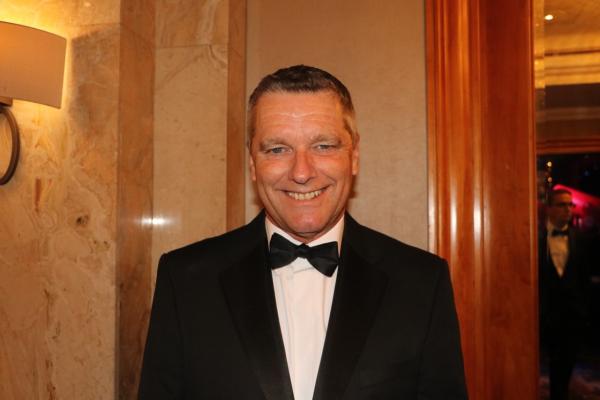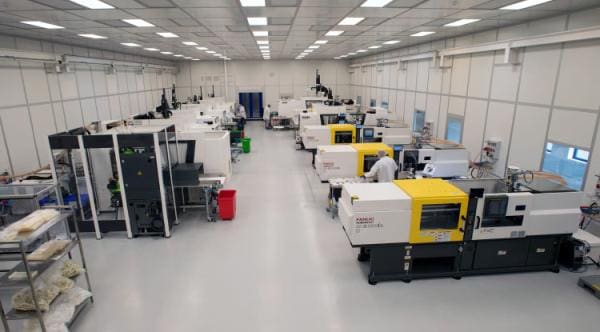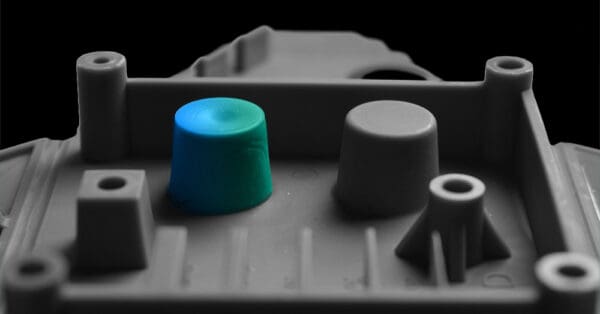
Designing Medical Devices the Boddingtons Way
As a multi-award winner of the Plastics Industry Awards for the design of medical devices, Boddingtons’ CEO Andy Tibbs shares ten criteria that have helped the Kent-based business become one of the leaders in Europe’s marketplace.
1. It’s a complex market – have patience with new entrants
The recent Covid-19 pandemic has impacted our industry in many new ways. For example, we have encountered a need for basic manufacturing education among many first time buyers and new procurers of medical equipment, devices and PPE.
It comes as news to some that new medical devices are not off-the-shelf products waiting to be ordered out of a catalogue. Even the simplest medical product needs to be designed and made fit for purpose at optimum cost and volume. These devices still need to be designed to guarantee patient safety, pass quality assurance and traceability tests and satisfy other regulations and public standards such as FDA, MDSAP and others. Even in emergencies, a visor or a face shield still needs stringent controls and thorough process validations. All of these issues have had to be carefully outlined to new entrants to the market in recent months.
2. Develop new skills around core competences
At nearly 70 years of age, Boddingtons is one of the most experienced plastics processors in the UK. Whatever the varied opportunities in medical device design – and there are many – it is vital to remember, nurture and develop one’s core competence in the medical marketplace. Ours happens to be high-quality technical injection moulding. This is, of course, a valuable skill set that informs most design-for-manufacture platforms in healthcare and medicine.
However, we are not, for example, a conceptual design house, nor are we experts in non-polymeric materials, fluid mechanics, or electronic systems – all of which are attractive and growing segments of the market.
We know our niche and part of our success is that we don’t drift away from it. We realise that our clients don’t need us to invent or market the next surgical instrument, test tube, or syringe. However, they absolutely rely on us 100% to help turn their ideas – or that of their design house – into manufacturing reality and help bring them to market with all the standards and legal paperwork.
3. Treat all clients the same
Treating all clients the same way, regardless of size, design scope, or budget is generally the best possible policy. The recent pandemic saw us talking to the usual stream of inventors and small companies, but we were also involved in a project of national importance, helping to change the design of tooling for manufacturability when involved in the Ventilator Challenge and working alongside very large OEMs.
It helps to view all of your inventors and your first-time design projects as blue-chip OEMs in the making. As for your blue-chip OEM customers, they also require the same innovation and fresh thinking qualities that characterise start-up operations.
At Boddingtons, we make things easy and transparent for everyone by using our bespoke gated system for new product introduction, advancing device designs through manufacturing via clear stages and sequences – each completed, paid for and approved before the next stage begins.
There are good reasons for this careful approach. Not for nothing is medical device development known as the ‘valley of death’ – where processes are measured in years and outcomes are uncertain. The rewards are high, but the pitfalls are also very deep.
4. Invest – and keep investing
The medical world is also one of the most highly regulated sectors on the planet and its demands are largely made in black and white. Production methods – and audits of the same – are highly structured, highly regulated and costly. The price of admittance in time and money can be extremely high.
Put simply – your company might have all the creativity and ingenuity in the world, but if you don’t have the validated equipment, the cleanroom(s), the certification(s), the compliance systems and documentation, you won’t be making medical sales. It’s as simple as that. There is no alternative to making the investment.

In recent years, therefore, we decided to back our med-tech aspirations with hard investment. We undertook the design and build of a purpose-built £4.6m facility, including a modular Class 7 cleanroom capable of making Class 1 and Class 2 medical devices. Lord Digby Jones formally opened this on November 1, 2016, and we have since gone from strength to strength since – more than doubling its size and taking our total investment to over £6.1m.
Successful suppliers to medical OEMs also need to keep pace with systems:
As a general rule, try to include all possible manufacturing, commercial and technical services for your client. Typically, your medical client needs to devote nearly all of their energies to the needs of the marketplaces, letting you take care of all the manufacturing concerns.
And if you can also provide support with many of the regulatory and administrative services that the medical sector demands, then you are likely to retain and increase your business. Boddingtons offers these services, in many cases becoming the responsible legal entity in the supply chain in order to relieve clients of the burden.
Qualifications such as ISO 9001, ISO 13485, FDA compliance and now, MDSAP, the ISO13485 extension, are now more or less mandatory for the successful and global med-tech supplier. The more you can include these in your supply arrangements, the better the overall business will be.
5. You’re (also) in the production innovation business
Put simply, if you’re not prepared to constantly rework and re-engineer your production cells, the medical marketplace is not for you. This kind of manufacturing is the polar opposite to fixed capital high volume systems that mass-produce the same product year after year.
In essence, we create a new factory cell each time we embark on a new medical device project. And increasingly, these Class 1 and 2 devices are made within our Class 7 cleanrooms.
Remember that much of the medical sector is innovating and creating devices that have never been manufactured before. You, therefore, need engineering skills in creating new production lines – assembling and disassembling these at speed and in line with market needs.
Our design-for-manufacturing ethos might have us create and build a six or seven workstation array within our Class 7 cleanroom. This cell might include injection moulding, automation, welding, hand assembly, camera QA inspections, packaging and printing services before despatch.
And then this line might be relocated, disassembled and/or modified in order to accommodate further med-tech business or a changing order.
6. Challenge your status quo
A case in point is our award-winning work with a cancer detection device project. The device is ultimately a collection device for fast and fail-safe testing/screening of bladder cancer. Modestly sized and very portable the device is of relatively complex construction involving many mouldings, sharps (needles) and vacuum-based technology.
Boddingtons was responsible for the design-for-manufacture of the device, including all subsequent injection moulding of component parts, assembly, packaging and shipping. Boddingtons also supported where needed the technical, legal and quality standards administrative work with the customer.
The original design concept and prototyping had originated from industrial designers in the medical technology field. The first design concepts of the project had been machined and glued/screwed together.
We were then tasked to rise to the challenging comprehensiveness of the customer’s brief – a brief that needed: design-for-manufacture, tooling, moulding, assemblies of various kinds, sharps handling, packaging, shipping and marketing assistance.
The finished product is comprised of several moulded components in different polymers, opaque and clear. We created a total of twelve injection moulding tools; some of these more than single cavity, thus creating nearly twenty moulded parts for the device, part of a grand total of 38 parts that needed assembly at Boddingtons.
Technical moulding, bonding, assembly, and deployment of medical needles were all factored into production. The assembly was complex and it included needle handling for which health and safety training and provision needed to be provided. We also created dedicated assembly workstations involving welding, automated gluing, UV curing, and leak detection.
The design and operation of the automated gluing station was particularly critical to allow precise dosing in the assembly process and to ensure against the prospect of adhesives running into the precise and delicate flow path channels.
Parts of the device use a specific volume of vacuum in operation. This vacuum is essential to the device’s functionality and limits the damage of cells for analysis. Therefore, specific testing to each needle vacuum needed to be established, controlled and measured at Boddingtons to ensure that every product was fully sealed, enabling the correct pull of fluid.
Polymers such as PP, HDPE and TPEs – all medical grade materials – were developed and tested by Boddingtons in the device’s production, and the chosen polymer grades are now critical to the device’s future.
Several manufacturing aspects – sharps inclusion and handling, automated UV curing and others – were completely new to us at Boddingtons. However, our experience in design-for-medical-manufacture had prepared us from the outset in the project management of the project and to take most all matters in house.
7. Your factory is your client’s factory
At Boddingtons, we essentially sell various manufacturing services: Our clients effectively rent part of our factory real estate. We then populate it with the best technology to get their job done in the most effective manner. All equipment is sourced and priced accordingly with no fear or favour given to any one supplier over another. This principle is global. We maintain a busy tool room, but if the project’s cost-effectiveness depends on commissioning equipment or tooling from abroad, we do so.
9. Re-design is also design
In recent years, we have been asked to take over medical projects that have lost their cost-effectiveness for various reasons. Very often, an expert review, repair, reworking and/or replacement of the client’s tooling can restore efficiency and profitability. A certain amount of ‘reshoring’ business also falls into this category.
10. One design leads to another – see and be seen
Once again, we are exhibiting at this year’s Medica Compamed exhibition in Düsseldorf, where we shall engage visitors and many of our design successes will be on view.
In recent years – and coupled with our manufacturing investments – we have made sure to complement our manufacturing gains with focussed marketing and with dedicated medical sales resources. The medical marketplace is truly international and at Boddingtons, we aim to keep pace with developments on a global scale.

Boddingtons
+44 (0)1622 833700
Website
Email





